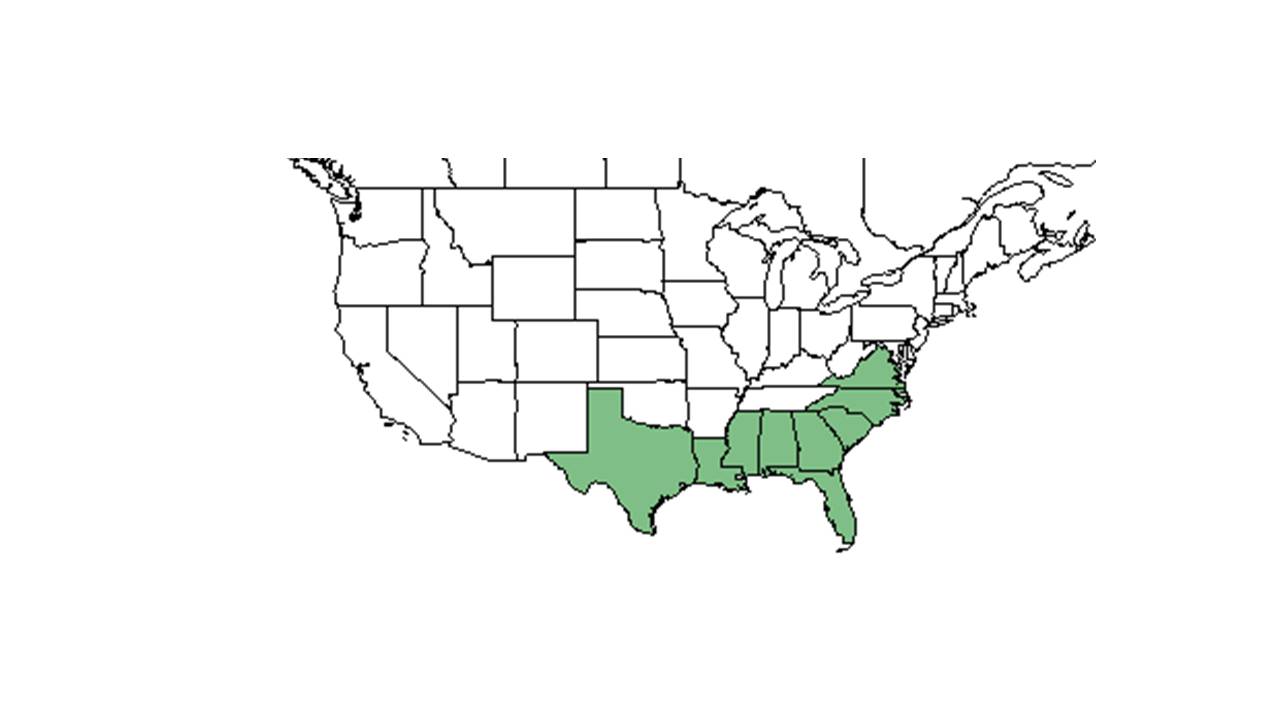Difference between revisions of "Eupatorium mohrii"
(→Description) |
|||
| Line 24: | Line 24: | ||
==Ecology== | ==Ecology== | ||
===Habitat=== <!--Natural communities, human disturbed habitats, topography, hydrology, soils, light, fire regime requirements for removal of competition, etc.--> | ===Habitat=== <!--Natural communities, human disturbed habitats, topography, hydrology, soils, light, fire regime requirements for removal of competition, etc.--> | ||
| − | + | It does well in open canopy areas on longleaf pine habitats. Does not do well in highly disturbed areas (such as clear cutting)<ref>Brockway, D. G. and C. E. Lewis (2003). "Influence of deer, cattle grazing and timber harvest on plant species diversity in a longleaf pine bluestem ecosystem." Forest Ecology and Management 175: 49-69.</ref> | |
| + | |||
===Phenology=== <!--Timing off flowering, fruiting, seed dispersal, and environmental triggers. Cite PanFlora website if appropriate: http://www.gilnelson.com/PanFlora/ --> | ===Phenology=== <!--Timing off flowering, fruiting, seed dispersal, and environmental triggers. Cite PanFlora website if appropriate: http://www.gilnelson.com/PanFlora/ --> | ||
native, perennial herb in longleaf pine stands.<ref>Harrington, T. B. (2011). "Overstory and understory relationships in longleaf pine plantations 14 years after thinning and woody control." Canadian Journal of Forest Research 41: 2301-2314.</ref> | native, perennial herb in longleaf pine stands.<ref>Harrington, T. B. (2011). "Overstory and understory relationships in longleaf pine plantations 14 years after thinning and woody control." Canadian Journal of Forest Research 41: 2301-2314.</ref> | ||
Revision as of 14:53, 13 July 2015
| Eupatorium mohrii | |
|---|---|

| |
| Scientific classification | |
| Kingdom: | Plantae |
| Division: | Magnoliophyta - Flowering plants |
| Class: | Magnoliopsida – Dicotyledons |
| Order: | Asterales |
| Family: | Asteraceae ⁄ Compositae |
| Genus: | Eupatorium |
| Species: | E. mohrii |
| Binomial name | |
| Eupatorium mohrii Greene | |

| |
| Natural range of Eupatorium mohrii from USDA NRCS Plants Database. | |
Contents
Description
Common Name: Mohr's thoroughwort
Distribution
Ecology
Habitat
It does well in open canopy areas on longleaf pine habitats. Does not do well in highly disturbed areas (such as clear cutting)[1]
Phenology
native, perennial herb in longleaf pine stands.[2]
Seed dispersal
Seed bank and germination
Fire ecology
Pollination
Mark Deyrup at Archbold Biological Station observed these Hymenoptera species on Eupatorium mohrii
Apidae: Apis mellifera
Apidae: Bombus impatiens
Halictidae: Agapostemon splendens
Halictidae: Halictus poeyi
Leucospididae: Leucospis robertsoni
Leucospididae: Leucospis slossonae
Megachilidae: Coelioxys mexicana
Megachilidae: Dianthidium floridiense
Megachilidae: Megachile albitarsis
Sphecidae: Bicyrtes capnoptera
Sphecidae: Bicyrtes insidiatrix
Sphecidae: Cerceris blakei
Sphecidae: Philanthus ventilabris
Sphecidae: Prionyx thomae
Sphecidae: Tachytes pepticus
Sphecidae: Tachytes validus
Vespidae: Pachodynerus erynnis
Use by animals
Diseases and parasites
Conservation and Management
Cultivation and restoration
Photo Gallery
References and notes
- ↑ Brockway, D. G. and C. E. Lewis (2003). "Influence of deer, cattle grazing and timber harvest on plant species diversity in a longleaf pine bluestem ecosystem." Forest Ecology and Management 175: 49-69.
- ↑ Harrington, T. B. (2011). "Overstory and understory relationships in longleaf pine plantations 14 years after thinning and woody control." Canadian Journal of Forest Research 41: 2301-2314.